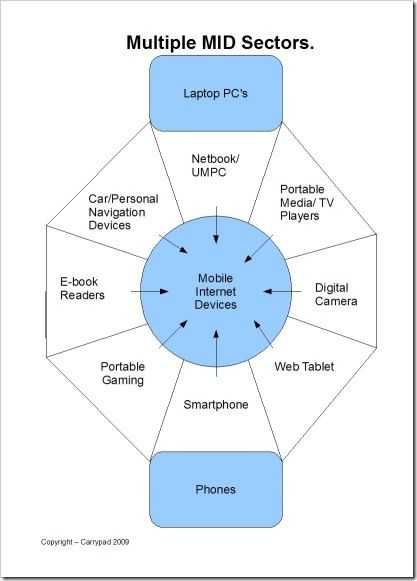At MBC09, the same question came up again and again as we demonstrated the MIDs. ‘Why do I need another device between a laptop and a mobile phone.’ It’s a valid question but one that is slightly polarised towards thinking about phones and PCs. What many people don’t realise is that there is a raft of devices and gadgets around them that already sit in this middle-tier space. Not only does a full web experience become an opportunity but if you look at all the other gadgets, turning these into mobile Internet devices and even consolidating some of them into a single device gives you a better picture of what the ‘middle tier’ could look like.
Rather than write a thousand words on the subject, I scribbled my idea into diagram form…
The diagram simply shows all the middle-tier gadgets and how they are becoming Internet-connected. Many of these devices will never make it onto a small phone simply because of physics. Media players, web tablets, interactive TV, gaming devices, e-book readers and navigation devices. All of these need 4-6" screens for a high-quality experience and they won’t fit on a smartphone.
There’s a huge opportunity out there for a middle-tier consumer gadget.












problem nowadays is how good a unique device succeed in rendering all tasks that multiple device render well…
1. The only thing that doesn’t belong there is the netbook.
2. Once you put cellular capabilities in a MID its automatically a smartphone. That is a crucial thing for Intel to understand. The future Archos device will be sold as a smartphone or it will fail in distribution.
3. The smartphone market is huge. Isn’t it much bigger than the rest of the bunch?
4. The battle Intel has is not for MIDs but for the smartphone OS. When seen in this context the competition is fierce.